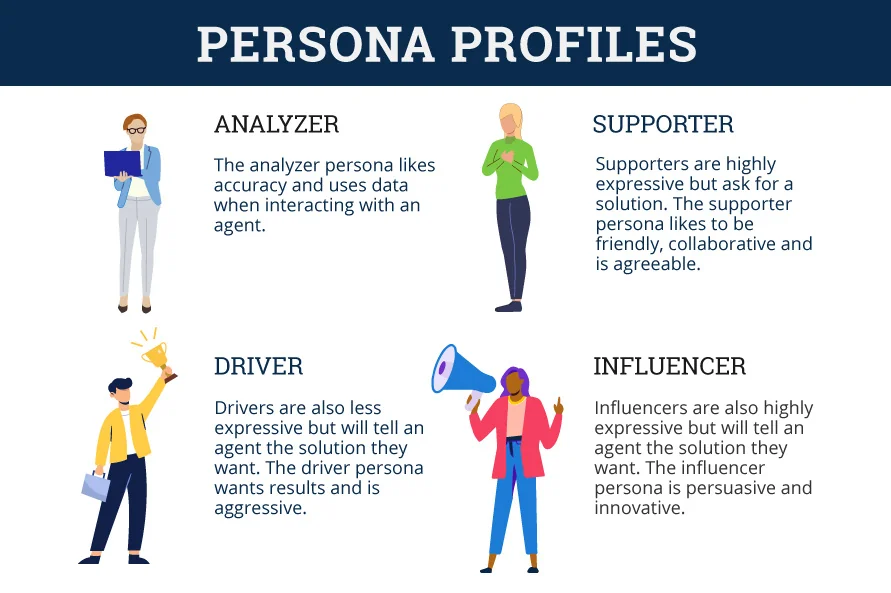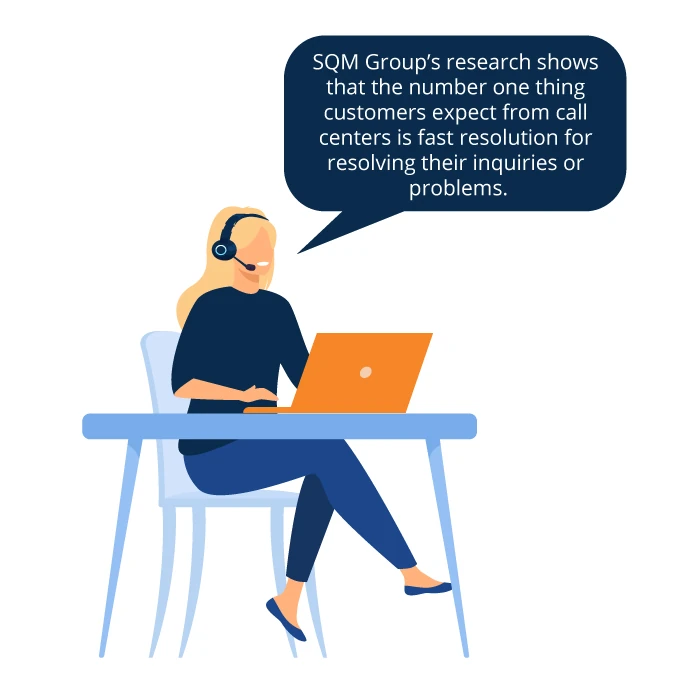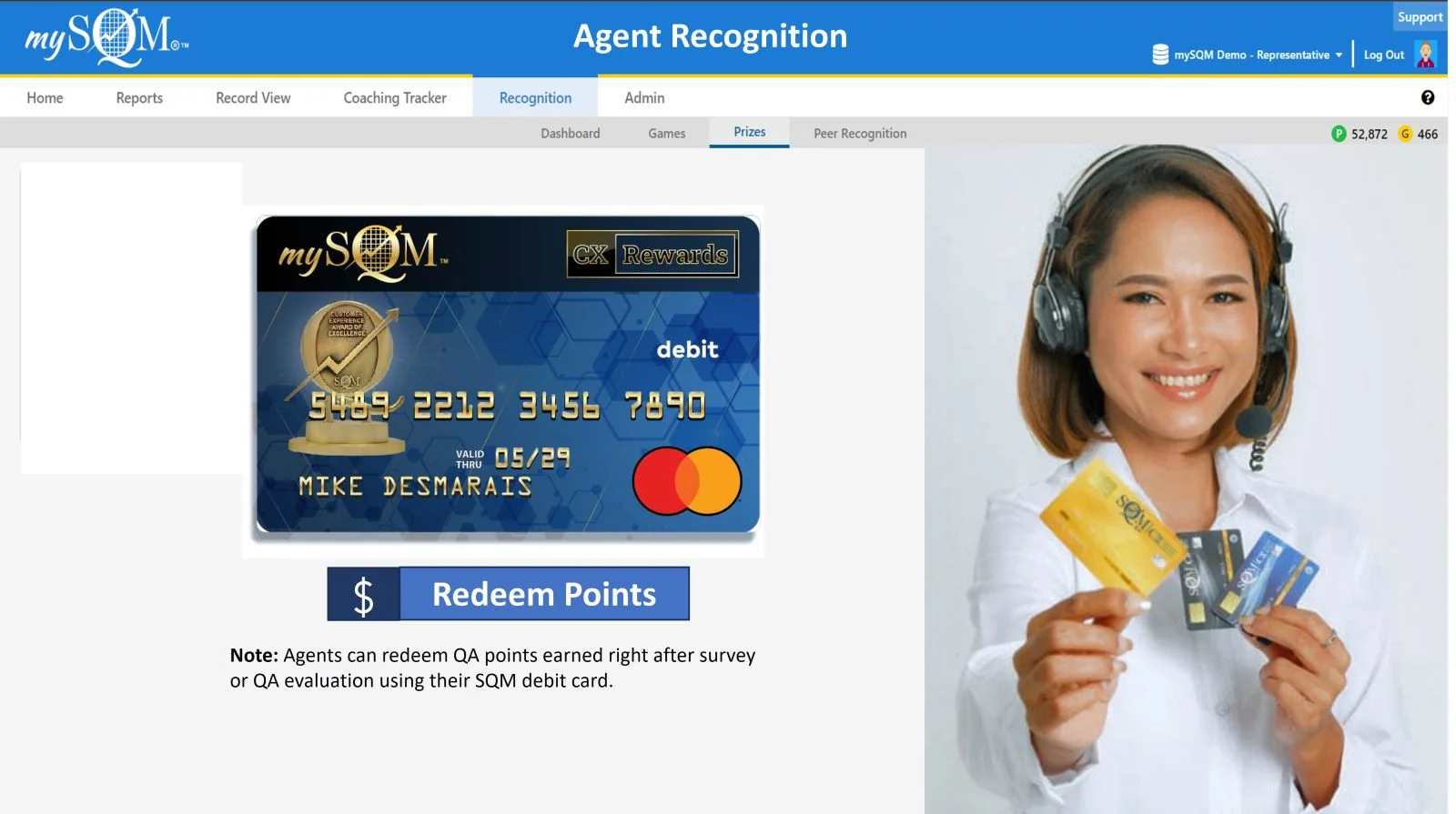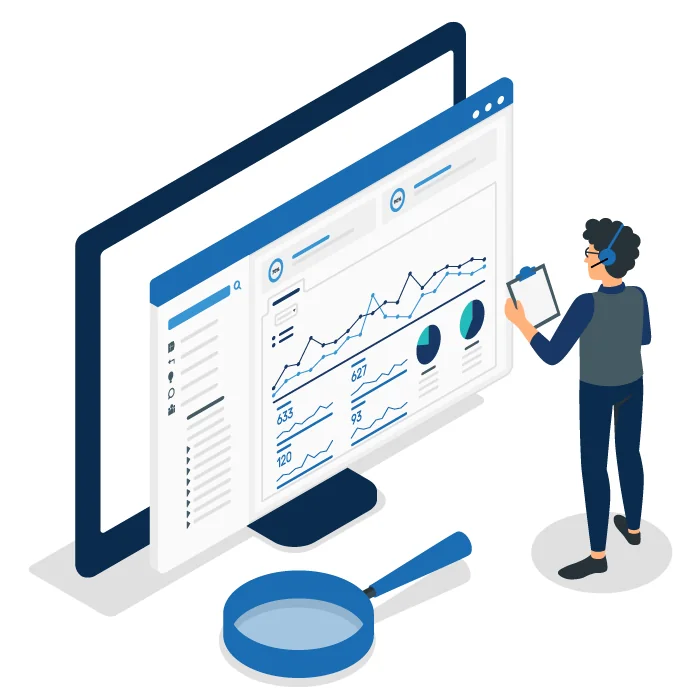The call center is your business's frontline, where customers form first impressions, which usually become lasting impressions. With increasing competition, companies must prioritize enhancing CX to foster customer satisfaction and loyalty. This blog will explore the top 10 strategies to elevate your call center operations, ultimately boosting performance and ensuring every customer interaction is memorable, efficient, and satisfactory.
1. Understand Your Customers
To truly improve customer experience in your call center, it's crucial to understand who your customers are, what they need, and how they behave. This foundational step will help tailor your services in a way that resonates with your audience and exceeds their expectations.
Identifying Customer Needs and Preferences
Start by digging deep into what your customers are seeking. Are they looking for swift problem-solving, or do they prefer comprehensive guidance? To pinpoint their preferences, gather data from various touchpoints. Use surveys, social media insights, and purchase histories. This information can offer critical insights into customer behavior and preferences, enabling you to design services that match their expectations.
Developing Customer Personas
Creating customer personas is an effective way to encapsulate the diverse characteristics of different customers. Personas are semi-fictional characters based on real data about customer demographics, behaviors, and needs. Crafting a detailed persona lets your agents put themselves in the customer's shoes, leading to more personalized and empathetic service experiences. Make sure to update these personas regularly as customer trends and markets evolve.

2. Focus on First Call Resolution
Improving First Call Resolution (FCR) is crucial to enhancing customer experience in call centers. SQM Group's research shows that the number one thing customers expect from call centers is fast resolution for resolving their inquiries or problems.

Measuring First Call Resolution can be complex. mySQM™ QA software removes the complexity of measuring FCR and provides an accurate FCR rate using multiple methods to calculate it. For example, mySQM™ QA software measures the FCR rate using internal (e.g., case management/CRM) and external (e.g., post-call surveys) methods.
Request a mySQM™ Customer Service QA Demo Video
Learn about SQM's agent… CSAT prediction model, which is based on standardized metrics, AI, and regression analysis to predict customer satisfaction derived from a QA evaluation. Our CSAT prediction model provides a high statistical correlation, translating to a 95% success rate in predicting agent CSAT in most cases.
Utilizing Resources Effectively
Equipping agents with the right tools and resources directly impacts their ability to resolve issues on the first call. This includes access to a robust knowledge base, customer data insights, and collaboration tools for consulting with other team members. Additionally, cross-functional training can prepare agents to handle various issues, thereby improving FCR rates.
Monitoring Success Rates
Regularly monitoring FCR rates provides valuable insights into the effectiveness of your customer service strategies. Implement systems to track how often issues are resolved in one call. Analyze the data to identify patterns—such as common problems or resource deficiencies—and use this information to inform training and resource allocation. Set specific goals for FCR rates and ensure continuous evaluation to refine processes further.
3. Invest in Agent Training
A call center's ability to deliver exceptional customer experiences lies in the hands of its agents. Continuous training and development are paramount to equipping your team with the necessary skills to excel.
SQM offers an on-demand online Agent Self-Training personalized intelligence feature for CX soft skills delivered through our mySQM™ QA solution. Agents independently enhance their CX soft skills and knowledge without direct supervision or structured classroom training programs.

Enhancing Communication Skills
At the heart of customer service is effective communication. Equip agents with training that focuses on active listening, clear articulation, and empathy. Role-playing scenarios can be a powerful method to practice these skills in a safe environment. With enhanced communication skills, agents are more likely to connect with customers and resolve issues efficiently.
Managing Challenging Situations
Handling difficult conversations is a large part of a call center agent's role. Training agents to stay calm and composed, even in high-stress situations, can turn potentially negative experiences into positive ones. Teach them conflict resolution tactics and strategies to de-escalate tense interactions. Empowered agents can transform customer dissatisfaction into loyalty and trust.
Providing Product Knowledge
An agent armed with robust product knowledge is indispensable. Customers expect competent guidance, and nothing frustrates them more than speaking to someone who cannot provide accurate and quick solutions. Ensure agents are well-versed in the products and services, complemented by regular updates about new offerings and changes.
4. Leverage Technology
Utilizing AI for Efficient Call Handling
AI can handle repetitive tasks, freeing up your human agents to tackle more complex customer issues. Through AI-powered chatbots, you can offer immediate support and quick answers to frequent queries, allowing customers to have their concerns addressed without waiting on hold. Additionally, AI can assist with call routing, ensuring that customers are quickly transferred to the most suitable agent.

Implementing CRM Systems
If you haven't adopted a Customer Relationship Management (CRM) system yet, it's time to reconsider. CRM systems keep all customer interactions in one easily accessible place. This centralization of information means agents can access customer history and preferences, leading to smoother and more informed interactions.
5. Personalize the Customer's Experience
Personalization shows customers that you value them as individuals rather than mere transaction points. Customers' loyalty to your brand is likely to increase when they feel understood.
Using Customer Data for Tailored Interactions
Leverage customer data to transform each interaction into a personalized experience. Agents can provide tailored recommendations and solutions by analyzing past interactions, purchase history, and preferences. Ensure your data collection methods are transparent and that customers know how their information is used to enhance their experience.
Encouraging Agents to Build Rapport
Empower your agents to go beyond scripts and guidelines. Encourage them to engage in genuine conversations and build rapport with customers. This can be achieved by allowing them to use empathetic language, actively listen, and show understanding of the customer's unique situation. Building rapport resolves issues more effectively and leaves the customer with a positive emotional connection to your brand.
6. Streamline Call Center Operations
Improving customer experience in call centers begins with streamlining operations. By focusing on key areas, you can significantly elevate your service quality.
Reducing Wait Times
Customers hate waiting on hold. Long wait times are a surefire way to frustrate and lose them. Employ strategies to cut down these times. Start by analyzing call traffic to ensure you have enough staff during peak hours. Consider investing in automation technologies such as AI-driven chatbots that can handle simple queries, leaving more complex issues for human agents.
Implementing Call-Back Options
Nobody likes to wait on hold, especially for long periods. Implementing call-back options offers a seamless experience where customers can choose to receive a call when it's their turn to speak with an agent. This simple yet effective option reduces frustration and enhances satisfaction. Call-back systems save customers time and give them flexibility, leading to positive interactions and a better overall perception of your service.
7. Empower Your Agents
Empowering your frontline agents is critical in delivering exceptional customer service. When agents feel prepared and valued, their performance mirrors their confidence.
Encouraging Decision-Making Authority
Trust your agents to make real-time decisions that benefit the customer. Giving them the authority to resolve issues on the spot without always needing to escalate speeds up service and creates a more satisfying experience. Equip agents with the guidelines and boundaries they need to make informed decisions, which will boost their confidence and inspire trust in customers.
Recognizing and Rewarding Performance
Recognition breeds motivation. Develop a strong system for acknowledging outstanding performance. Regularly praise achievements in team meetings and use tangible rewards such as bonuses or gift cards. Building a culture of appreciation ensures that everyone feels valued, leading to better staff retention and enhanced customer experiences.
mySQM™ QA helps recognize agents through award points earned in real-time after a QA evaluation that is converted to dollars and redeemed at most retailers using an SQM debit card.

8. Collect and Act on Feedback
Customer feedback is a powerful tool for enhancing the customer experience. Businesses that actively seek and act on feedback demonstrate a commitment to improvement, significantly impacting customer satisfaction.
Conducting Regular Surveys
Regular surveys are an effective way to gather customer feedback. They allow customers to share their experiences and point out areas for improvement. Surveys should be concise and targeted, focusing on specific aspects of the service. Using online tools to automate survey distribution and analysis can streamline the process and ensure higher response rates.
Implementing Changes Based on Insights
Gathering feedback is meaningless without action. Analyzing the feedback to identify common themes or recurring issues is essential. Implement changes where necessary and communicate these changes to your customers.
Showing that feedback leads to tangible improvements can enhance customer trust and loyalty. Regularly update customers on new policies, product updates, or service improvements that stem from their feedback, reinforcing their role in shaping the customer experience.
9. Measure and Analyze Performance
Improving customer experience in your call center fundamentally relies on effectively measuring and analyzing performance. This process unveils how well you're doing and highlights areas that need improvement.

Setting Clear KPIs
Key Performance Indicators, or KPIs, serve as your guiding star to evaluate call center success. These might include metrics like Average Handling Time (AHT), First Call Resolution (FCR), and Customer Satisfaction Score (Csat). By doing so, you create a clear structure that steers your team towards achieving tangible goals and enhances the accountability and productivity of your entire operation.
Using Analytics for Insights
In today's data-driven world, leveraging analytics has become indispensable for any call center aiming to optimize customer experience. Utilize call recordings, customer feedback, and interaction histories to gain deep insights into customer behaviors and preferences.
This data can highlight trends, peak interaction times, and common customer grievances. Armed with these insights, your team can tailor their approach to meet customer needs more effectively, leading to an improved CX that resonates with your customers.
10. Implement Omnichannel Support
Ensure customers can reach you through various channels—phone, email, chat, and social media. Consistent and cohesive support across these channels improves overall customer satisfaction and makes it easier for customers to get help in their preferred way.
